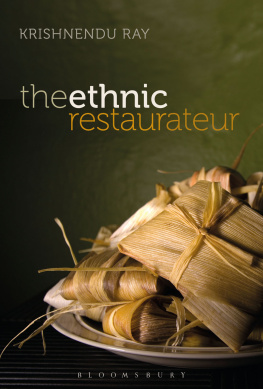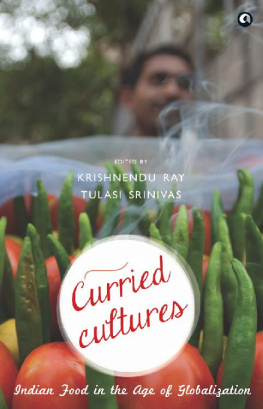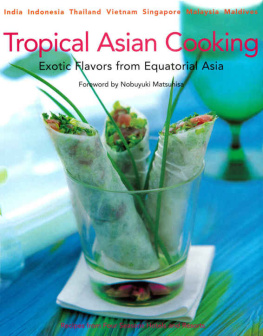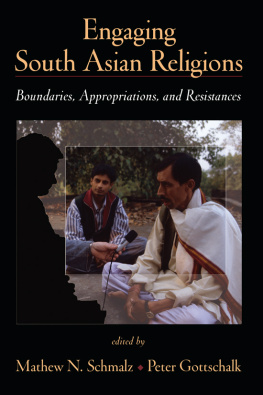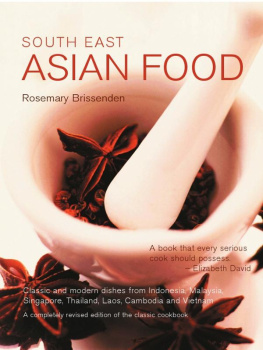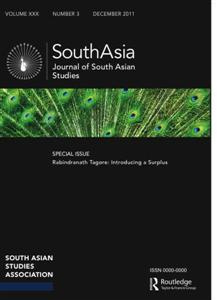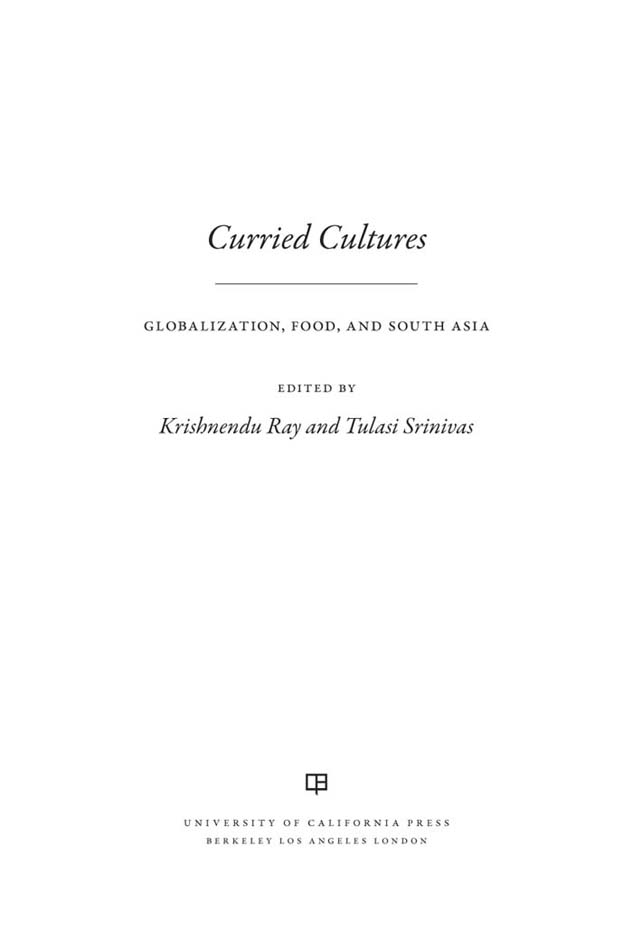Curried Cultures
CALIFORNIA STUDIES IN FOOD AND CULTURE
Darra Goldstein, Editor
Curried Cultures

GLOBALIZATION, FOOD, AND SOUTH ASIA
EDITED BY
Krishnendu Ray and Tulasi Srinivas

UNIVERSITY OF CALIFORNIA PRESS
BERKELEY LOS ANGELES LONDON
Elizabeth Buettners Going for an Indian: South Asian Restaurants and the Limits of Multiculturalism in Britain was first printed in slightly different form in The Journal of Modern History, 80(4), 865901. It is reprinted here with permission. Jayanta Senguptas Nation on a Platter: The Culture and Politics of Food and Cuisine in Colonial Bengal was first printed in slightly different form in Modern Asian Studies, 44(1), 8198. It is reprinted here with permission. Krishnendu Rays Global Flows, Local Bodies: Dreams of Pakistani Grill in Manhattan was printed in different form (and under a different title) in Food, Culture & Society, 14(2) 243273.
University of California Press, one of the most distinguished university presses in the United States, enriches lives around the world by advancing scholarship in the humanities, social sciences, and natural sciences. Its activities are supported by the UC Press Foundation and by philanthropic contributions from individuals and institutions. For more information, visit www.ucpress.edu.
University of California Press
Berkeley and Los Angeles, California
University of California Press, Ltd.
London, England
2012 by The Regents of the University of California
Library of Congress Cataloging-in-Publication Data
Curried cultures : globalization, food, and South Asia / edited by Krishnendu Ray and Tulasi Srinivas.
p. cm.
Includes bibliographical references and index.
ISBN 9780-520270114 (cloth : alk. paper)
ISBN 9780-520270121 (pbk. : alk. paper)
1. FoodSocial aspectsSouth Asia. 2. Food habitsSouth Asia. 3. CosmopolitanismSouth Asia. 4. NationalismSouth Asia. 5. GlobalizationSocial aspects. I. Ray, Krishnendu. II. Srinivas, Tulasi.
GT2853.S64C87 2012
394.1'20954dc23
2011029711
Manufactured in the United States of America
11 20 19 18 17 16 15 14 13 12
10 9 8 7 6 5 4 3 2 1
In keeping with a commitment to support environmentally responsible and sustainable printing practices, UC Press has printed this book on 50-pound Enterprise, a 30% post-consumer-waste, recycled, deinked fiber that is processed chlorine-free. It is acid-free and meets all ANSI/NISO (Z 39.48) requirements.
To my mother Rukka Srinivas for stirring in me a fascination
for all things gastronomic.
To Rudra and Babul for keeping me sane.
To Sierra Burnett Clark and Jackie Rohel for all the
unacknowledged work.
CONTENTS
PART ONE
OPENING THE ISSUES
Krishnendu Ray and Tulasi Srinivas
Akhil Gupta
PART TWO
THE PRINCELY-COLONIAL ENCOUNTER
AND THE NATIONALIST RESPONSE
Angma D. Jhala
Jayanta Sengupta
PART THREE
CITIES, MIDDLE CLASSES, AND PUBLIC CULTURES OF EATING
Stig Toft Madsen and Geoffrey Gardella
Holly Shaffer
Susan Dewey
Elizabeth Buettner
Krishnendu Ray
Arijit Sen
Tulasi Srinivas
R. S. Khare
PART ONE

Opening the Issues
ONE

Introduction
Krishnendu Ray and Tulasi Srinivas
South Asia is a new hub of intersecting global networks nourished by proliferating material and symbolic transactions propelling bodies, things, and conceptions across national boundaries. In this book, traversing national boundaries is the contingent operational definition of globalization. That implies at least two things: globalization becomes more visible after national boundaries crystallize; and we witness a new kind of self-consciousness about the connections between various locales and between the local and the supralocal in this phase of globalization. Furthermore, the affiliation of food to the body makes comestibles intensely local, in spite of their long history of distant circulation. Thus food is a particularly productive site to interrogate a new iteration of something old, because it links not only the global to the local, but the mind to the body and beyond. By weaving densely local stories, this book draws attention to processes of globalization as they play out at particular places and on specific peoples conceptions of themselves and their world.
In the last quarter of the twentieth century, new nodes in the global traffic in capital and culture joined previous flows of the capitalist world-economy from the edges of the Mediterranean and the Atlantic. Works such as The Globalization of Chinese Food (Wu & Cheung 2004), Asian Food: The Global and the Local (Cwiertka & Walraven 2001), The Globalization of Food (Inglis & Gimlin 2009) and Globalization, Food and Social Identities in the Asia Pacific Region (Farrer 2010) bear witness to those transformations. Until now there has been no comparable work centering on the South Asian wellspring of unconventional flows of bodies, edible commodities, and cultural conceptions. Although South Asian cookery is transforming the everyday world of urbanites everywhere, there has been little attention given to this process. Curried Cultures closes that gap in our knowledge about South Asia, its connections to the larger world, and to the cultural environment that urban middle classes almost everywhere face with increasing potency. It draws attention to timeless processes of creolization and conservation, flow and counter-flow, and transvaluation of the old and production of the new in the food cultures of globalizing middle classes. The title, Curried Cultures, is ironic, self-consciously playing on a stereotype, and earnest enough to appropriate the curry as a sign for the people it talks about. These are people who are born of the transaction between India and elsewhere, no different from the genealogies of Chicken Tikka Masala or Curry Raisu, not wholly belonging to the subcontinent and yet oddly defined by it.
Partly what is new about the current conjuncture that is marked by the term globalization is that numerous spatially distributed urban middle classes have been dramatically pulled into transnational transactions in taste, and they have left a legible imprint of their experience, often in multilingual mediums. Paying attention to this practical-linguistic ecumene is important here so as to redress excessive attention to nation, religion, and commodity in the literatures on the global-cultural link. In addition, numerous chapters in this volume are written by scholars who are themselves of the middle class and who often write about people who belong to that class to whom English is available, at least as one in a bilingual or multilingual world. The anglophone middle class comes with a location in a social hierarchy with a shared feeling of middleness, either precariously or assuredly so. Some of the brash assertion of middleness of this class is a product of the novelty of their location in an emerging economic and cultural powerhouse such as India (Dickey 2010, 2000; Fernandes 2006; Deshpande 2003; Fernandes & Heller 2006; Dwyer 2000; Dern 2008; Harriss 2006; and Fuller & Narasimhan 2007).


